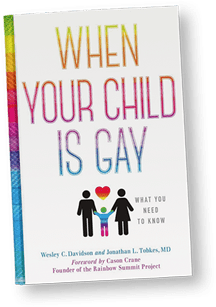Did you know that:
- Researchers have found more than 1/2 of young LGBTQ people between 13 and 24 have been diagnosed with an eating disorder.
- Gay males were 7 x more likely to report binging and 12 x more likely to report purging than heterosexual males.
- Females who identified as lesbian, bisexual or mostly heterosexual were about twice as likely to report binge-eating at least once per month in the last year.
- Black and Latinx LGBs have at least as high a prevalence of eating disorders as white LGB persons.
(Source: National Eating Disorders Association)
According to the National Eating Disorders Association, the risk factors for an eating disorder fall in three categories:
- Biological: Someone with an immediate family member such as a parent or sibling who has an eating disorder is at risk of developing one themselves.
- Psychological: People who have or had an anxiety disorder are more prone to developing an eating disorder.
- Social: People from racial or ethnic minority groups who experience pressure to assimilate western ideas of beauty and ways of life, have an increased risk for eating disorders.
The most common eating disorders, according to the American Psychiatric Association, are:
- Anorexia: marked by extreme control over calorie intake, an intense fear of gaining weight and often an unrealistic view of body size and shape.
- Bulimia: “binge-purge syndrome.” Bulimia is marked by frequent, rapid overeating, followed by purging to avoid gaining weight. Purging may include forced vomiting, obsessive exercising and misuse of laxatives and diuretics.
- Binge-eating disorder is frequent out-of-control eating in a short period of time.
How Can Parents Detect Eating Disorders In Their Teens? Look out for These Red Flags:
- Being consumed by thoughts of food, weight, fat, or calories.
- Avoiding once favorite foods.
- Preferring to eat alone to avoid judgment of others.
- Exercising excessively: working out, setting unrealistic goals or ignoring signs of injury or fatigue.
- Finding fault with one’s body or seeing it as looking very different from other’s people perceptions. A coalition of state attorneys general is launching an investigation into TikTok. “It follows reports that Meta’s internal research shows that using Instagram has been associated with increased risks of physical and mental health harm to young people, including depression and EATING DISORDERS.” Wall St. Journal. “TikTok Added to States’ Probe Over Online Harm to Children,” by John D. McKinnon, 3-3-22.
- Paying Increased attention to other people’s bodies.
- Regularly using appetite suppressants, laxatives, and diuretics or enemas.
If left untreated, eating disorders can cause:
- Bone loss.
- Muscle loss and weakness, including heart muscle.
- Severe hydration which can lead to kidney failure.
- Dry skin and hair loss.
- Slowed digestion.
- Fainting, fatigue and overall weakness.
- Menstrual irregularities or loss of libido.
- Depression.
If you suspect your child has an eating/exercise disorder, you can help by:
- Have your child eat meals with you so he’s not skipping them or eating too little or too much.
- A sense of connectedness to the gay community may have a protective effect against eating disorders.
- According to The Trevor Project, National Survey on LGBT Youth Mental Health 2021, being accepted by at least one adult can decrease the risk by 40% of an LGBTQ youth attempting suicide.

When Your Child Is Gay: What You Need To Know
For more detailed advice, see book, co-authored with a mother of a gay son and a psychiatrist, Jonathan L. Tobkes, M.D.
Posted in American Psychiatric Association, Eating Disorders, GLBT mental health, GLBT teens, GLBTQ support, National Nutrition Month, National Nutritional Month, bisexual, depression, eating disorders of gay and lesbian teens, parental guidance, parental tips for preventing bullying, parenting gay children, the Trevor Project